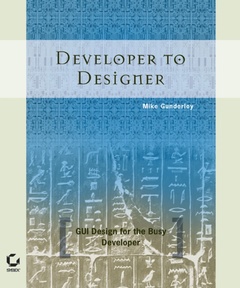Description
Developer to designer: GUI design for the bust developer
Author: GUNDERLOY Mike
Language: English
Subject for Developer to designer: GUI design for the bust developer:
Approximative price 42.29 €
Subject to availability at the publisher.
Add to cart346 p. · 19x23 cm · Paperback
Description
/li>Contents
/li>
Introduction.
Chapter 1: The Big Picture.
Chapter 2: Putting Words on the Screen.
Chapter 3: Managing Windows.
Chapter 4: Command Buttons.
Chapter 5: Using Text Input Controls.
Chapter 6: The Other Controls.
Chapter 7: Dialog Boxes.
Chapter 8: Common Windows User Interface Elements.
Chapter 9: User Input and Navigation.
Chapter 10: Common Interaction Patterns.
Chapter 11: User Choice, Customization, and Confusion.
Chapter 12: The Web Is Not Windows.
Chapter 13: Building a Web Page.
Chapter 14: Common Web Design Patterns.
Chapter 15: Common Web Interaction Patterns.
Appendix: Looking Forward to the Next Generation: Designing User Interfaces for Avalon.
Index.
These books may interest you

Android Best Practices 35.82 €



